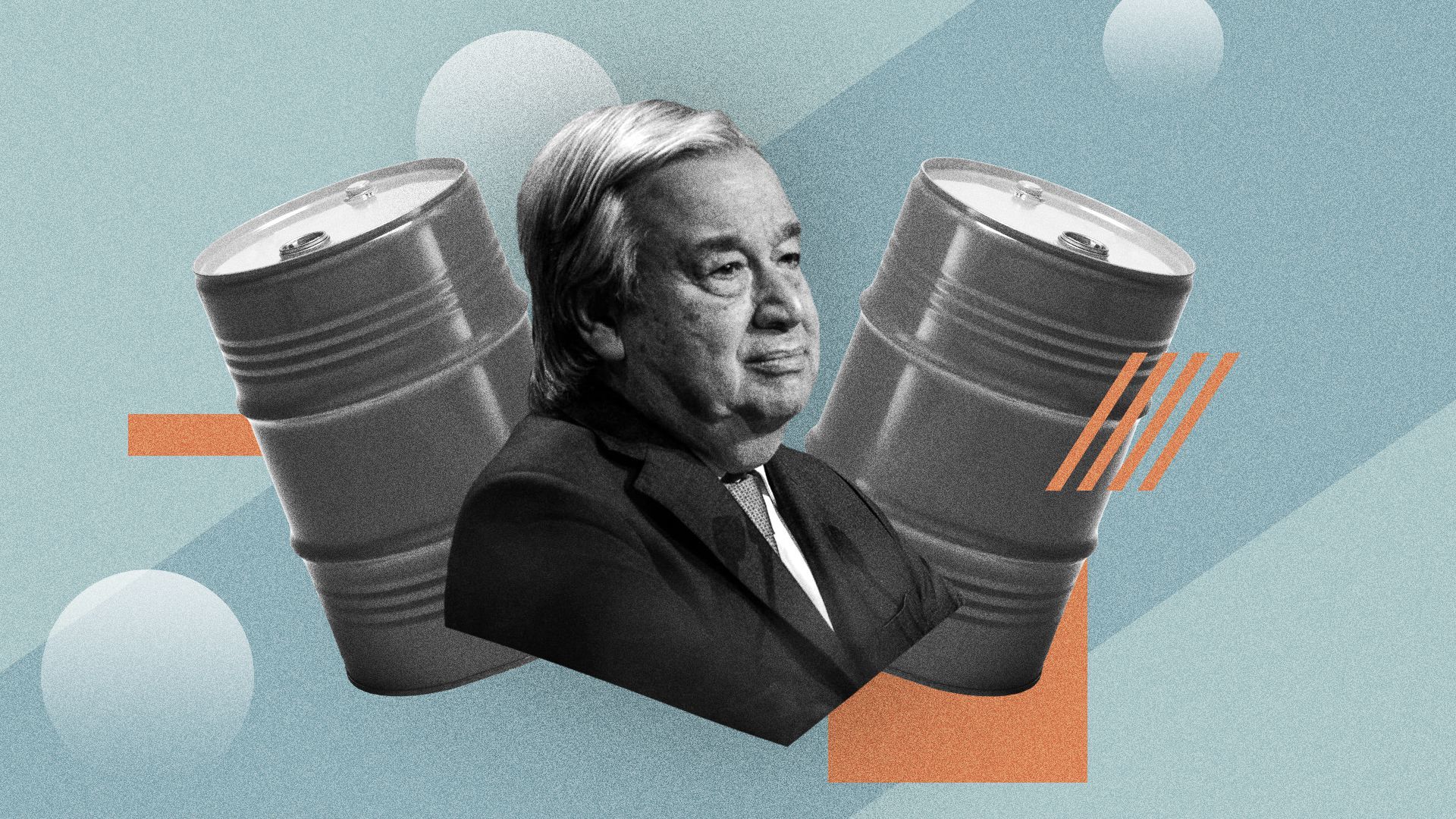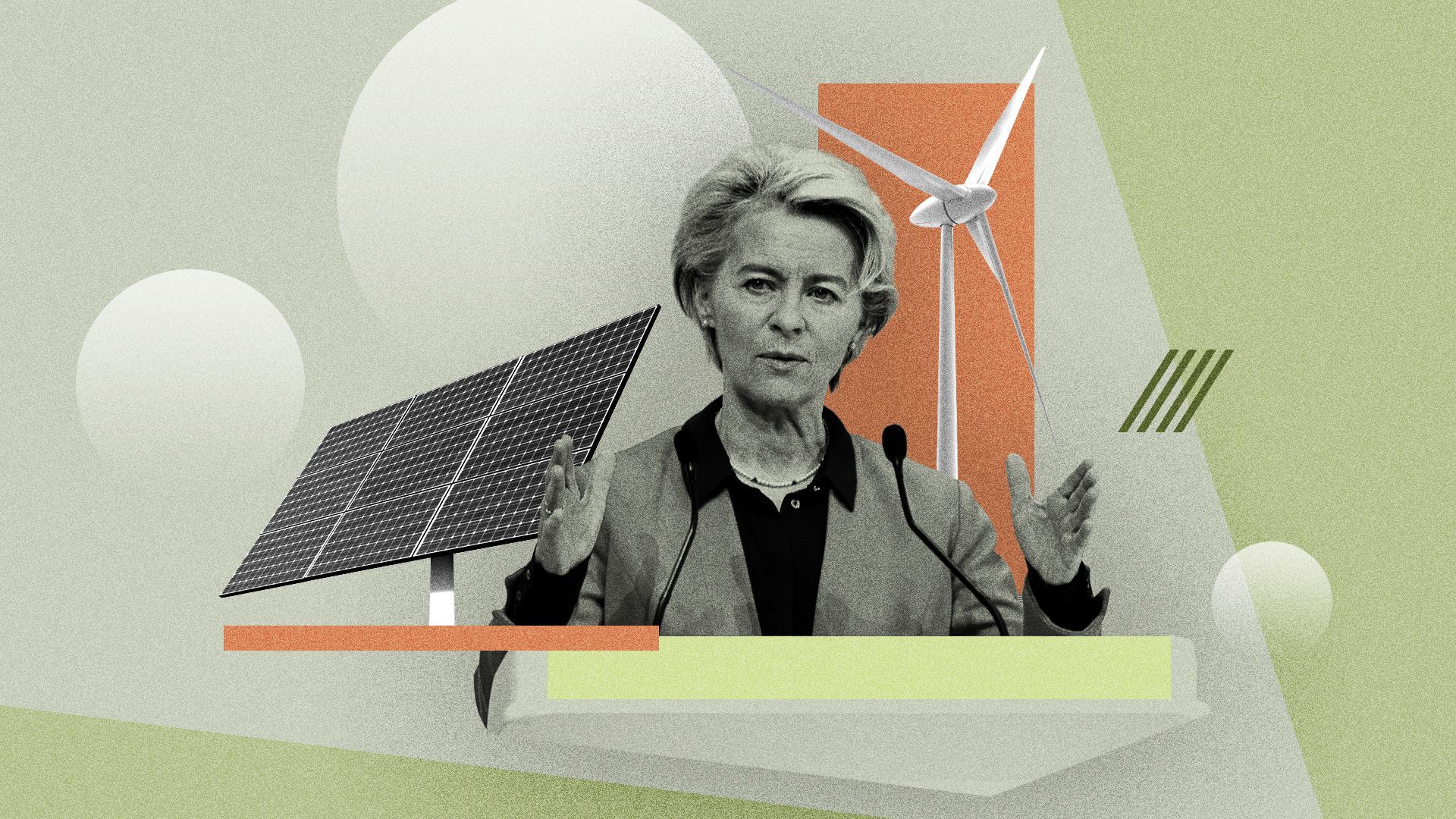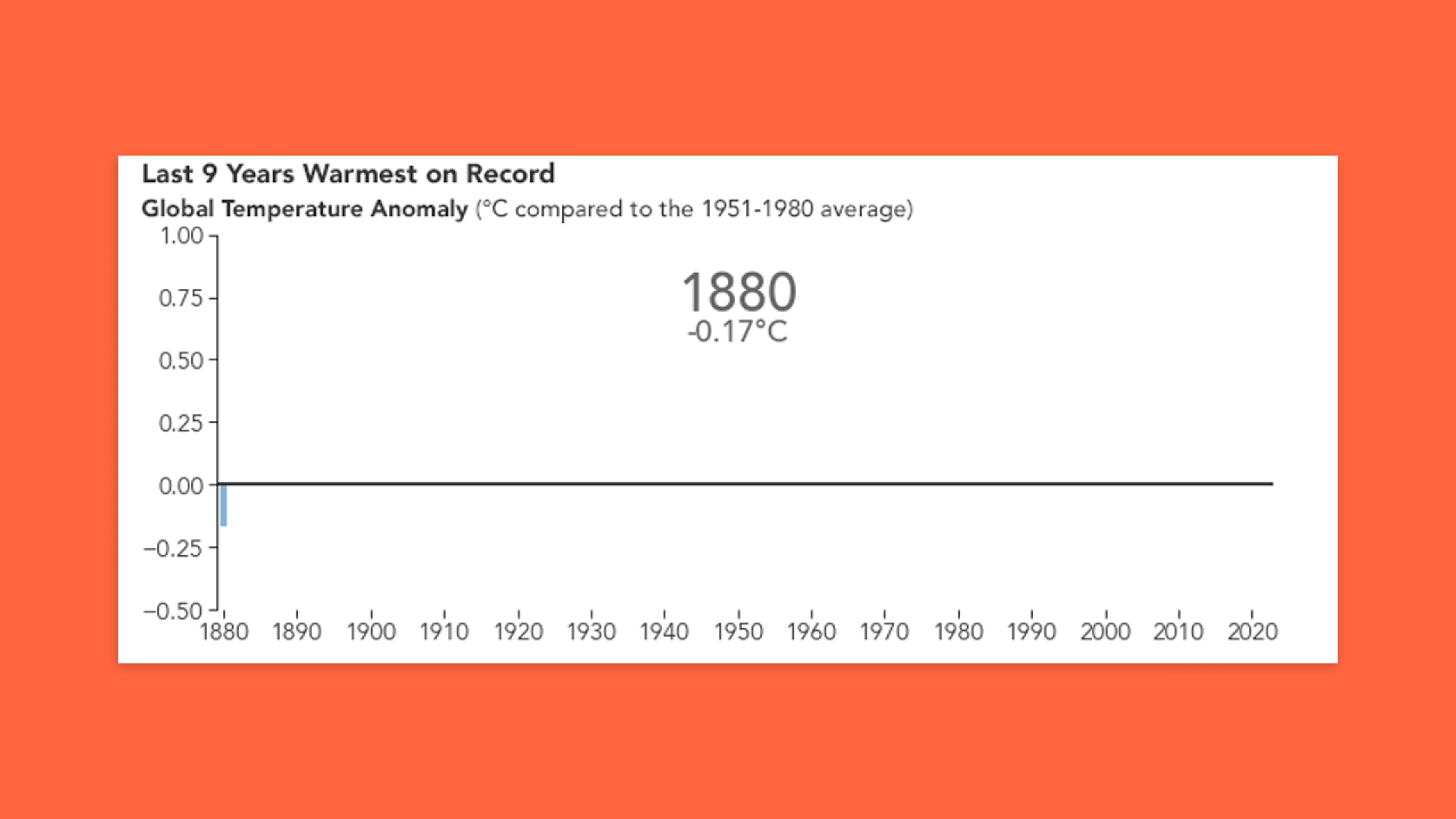| |
| |
| |
| Presented By American Petroleum Institute (API) |
| |
| Axios Generate |
| By Ben Geman and Andrew Freedman · Jan 18, 2023 |
| 🏎️ Away we go! Today's newsletter has a Smart Brevity count of 1,244 words, 5 minutes. 🎧 Don't miss the finale of Axios' "How it Happened: Elon Musk vs. Twitter" as host Erica Pandey takes stock of Musk's business empire. Listen 🎶 Exactly 15 years ago R&B great Mary J. Blige ruled Billboard's album chart with "Growing Pains," which provides today's intro tune... |
| |
| |
| 1 big thing: Russia and China will dictate the oil market's path |
 |
|
| Illustration: Megan Robinson/Axios |
| |
| Russia and China are "wild cards" that will "dominate" the global oil market outlook this year, the International Agency said, Ben writes. Driving the news: IEA this morning issued an upward revision of 2023 demand estimates as China's easing of COVID restrictions helps push up consumption. The agency sees global demand rising by 1.9 million barrels per day (bpd) this year to reach 101.7 million bpd. Increased jet fuel use accounts for nearly half of the growth. The big picture: Even before today, IEA saw global oil thirst heading for an all-time high this year, but now the record could be even more pronounced. - "This occurs against a backdrop of lower prices, a somewhat improved economic outlook and a faster than anticipated reopening of China," IEA said.
- China, the world's largest oil importer, accounts for around half of demand growth estimates.
The intrigue: A big question is much recently imposed EU sanctions and the G7 price cap ultimately slow Russia's massive exports. Russian crude shipments have "partially rebounded" after dipping when those policies took effect in December, "underscoring the high degree of uncertainty for the outlook." What they're saying: IEA aren't the only experts expecting significant consumption growth this year. "We are very optimistic in terms of demand coming back to the market," Saudi Aramco CEO Amin Nasser tells Bloomberg. |
    |
| |
| |
| 2. UN leader bashes fossil fuel producers at Davos |
 |
|
| Photo Illustration: Lindsey Bailey/Axios. Photo: Andrej Ivanov/Getty Images |
| |
| United Nations Secretary-General António Guterres slammed fossil fuel companies, singling out ExxonMobil, in a grim table-setting speech at the World Economic Forum in Davos this morning, Andrew writes. Why it matters: Addressing the world's elite, Guterres elevated the findings of a study published last week in the journal Science, which showed that Exxon's own climate research accurately predicted the pace and severity of global warming. (Exxon disputed the findings.) - Despite that information, the study found, the company chose to publicly cast doubt on climate science findings, including UN-sponsored research, for decades.
The big picture: Guterres' speech comes at a fraught time of simmering conflicts and a deadly pandemic. - Powerful divides are getting harder to bridge, Guterres warned, and tackling climate change is caught up in this maelstrom.
What they're saying: "The science has been clear for decades. I'm not talking only about UN scientists, I'm talking even about fossil fuel scientists," Guterres said. - "We learned last week that certain fossil fuel producers were fully aware in the 1970s that their core product was baking our planet. And just like the tobacco industry, they rode roughshod over their own science."
- "Some in big oil peddled the big lie."
The bottom line: Guterres implored political and business leaders to speed the transition away from fossil fuels, and reject plans to expand fossil fuel production. |
    |
| |
| |
| 3. First Look: Kayrros partners with UN on methane |
 |
|
| Photo illustration: Shoshana Gordon/Axios. Photo: Ashley Cooper/Construction Photography/Avalon/Getty Images |
| |
| Environmental intelligence firm Kayrros is teaming up with the UN Environment Program to make its global data on methane emissions sources available to the public and policymakers, the company first told Axios, Andrew writes. Why it matters: Methane is a powerful greenhouse gas, and Kayrros' data can help countries and oil and gas companies track and fulfill their emissions reduction commitments. - For example, over 100 countries have vowed to cut their methane emissions by 30% by 2030 under the Global Methane Pledge.
The big picture: Kayrros will provide its data to the UN's International Methane Emissions Observatory, which is creating a reliable global public dataset of methane emissions. What they're saying: "The technology on its own is not enough," said Christian Lelong, director of climate solutions at Kayrros, in an interview. - Lelong noted that emissions cuts can now be closely and independently tracked and referred to regulatory agencies, which is a key step.
- At COP28 in Dubai, Lelong expects to see some of the first scorecards for how large methane sources, known as super emitters, are being addressed.
- "Transparency is a very powerful thing," Leland said.
|
    |
| |
| |
| A message from American Petroleum Institute (API) |
| Make, move and improve American energy |
| |
 |
| |
| With global uncertainty, Washington must prioritize American natural gas and oil as a long-term strategic asset. Here's how: - Make: Increase U.S. energy development.
- Move: Permit infrastructure.
- Improve: Enable innovation to lower CO2 emissions.
The solution is here in America. |
| |
| |
| 4. The Fed's cautious climate foray |
| The Fed's release of plans to analyze climate risks facing banking giants came wrapped in a clear message: It doesn't want to become an environmental regulator, Ben writes. Catch up fast: The central bank yesterday issued instructions to the six largest U.S. banks: Citigroup, Bank of America, Goldman Sachs, JPMorgan Chase, Morgan Stanley and Wells Fargo. (Full document) The "pilot exercise" seeks info by July 31 on how physical risks (think extreme weather) and "transition risks" (think energy policy and tech changes) will affect their portfolios, including defaults and losses. The intrigue: The Fed is proceeding with the analysis as Republicans, including the ascendant House GOP, are critical of the central bank's foray into climate. - But yesterday's announcement — echoing comments by Fed chair Jerome Powell — repeatedly emphasizes the Fed does not see the data collection and what it reveals as a precursor to new requirements.
- "The Fed has narrow, but important, responsibilities regarding climate-related financial risks — to ensure that banks understand and manage their material risks," vice chair for supervision Michael S. Barr said in a statement.
Reuters coverage |
    |
| |
| |
| 5. Davos signals fallout from U.S. policy shift |
 |
|
| Photo illustration: Gabriella Turrisi/Axios. Photo: Stefan Wermuth/Bloomberg via Getty Images |
| |
| Aftershocks of the U.S. fusion of climate and industrial policy are on display across the Atlantic at the World Economic Forum, Ben writes. Driving the news: EU boss Ursula von der Leyen said new aid for low-carbon industries is en route in response to manufacturing and project subsidies in the U.S. climate law and elsewhere. What's next: Proposals are afoot to speed project approvals, and "targeted aid for production facilities...to counter relocation risks from foreign subsidies," she said in a speech Tuesday. She previewed a new "Net-Zero Industry Act" to "focus investment on strategic projects along the entire supply chain." Yes, but: Von der Leyen noted efforts to work together in areas like the shape of U.S. EV subsidy rules. "She directed most of her ire at China," Politico observes, "portraying the transatlantic subsidy race as not a competition but a chance to jointly marshal western resources against a common foe." The big picture: U.S. policy has leaned into major subsidies that have a twin aim of emissions-cutting and building domestic industries. The latter efforts are causing friction with allies, especially around EVs, where consumer tax credits are tethered to domestic materials, battery and vehicle assembly rules. |
    |
| |
| |
| 6. Greater chances of a record-warm year in 2023 |
 |
|
| Animation showing global average surface temperature departures from average vs. 1951-1980. Image: NASA GISS. |
| |
| Believe it or not, average global surface temperatures have actually been relatively cool over the last three years — but that's about to change, Andrew writes. Why it matters: Temperatures are expected to jump this year — and 2023 or 2024 could set a new global record. The big picture: A rare "triple dip" La Niña in the tropical Pacific Ocean kept temperatures in check in 2022, with the year ranking fifth-warmest since instrument records began. - La Niña events are characterized by cooler-than-average waters in the equatorial tropical Pacific and tend to put a lid on global temperatures.
- But 2022 was among the warmest La Niña years on record, and if the phenomena dissipate, as forecasts increasingly indicate, global temperatures would likely jump this year and even more so next year.
- If an El Niño event — characterized by milder than average tropical Pacific Ocean temperatures — sets in, 2023 could even meet or come close to hitting a record high.
What they're saying: "I forecast about a 15% possibility of a new record in 2023. And if we are in an El Niño by the end of 2023, an almost certainty of a new record in 2024," Gavin Schmidt, who heads NASA's Goddard Institute for Space Studies in New York, told Axios via email. Read more |
    |
| |
| |
| A message from American Petroleum Institute (API) |
| Make, move and improve American energy |
| |
 |
| |
| With global uncertainty, Washington must prioritize American natural gas and oil as a long-term strategic asset. Here's how: - Make: Increase U.S. energy development.
- Move: Permit infrastructure.
- Improve: Enable innovation to lower CO2 emissions.
The solution is here in America. |
| |
| 📬 Did a friend send you this newsletter? Welcome, please sign up. 🙏 Thanks to Mickey Meece and David Nather for edits to today's newsletter. |
 | | Your personal policy analyst is here. | | |
No comments:
Post a Comment